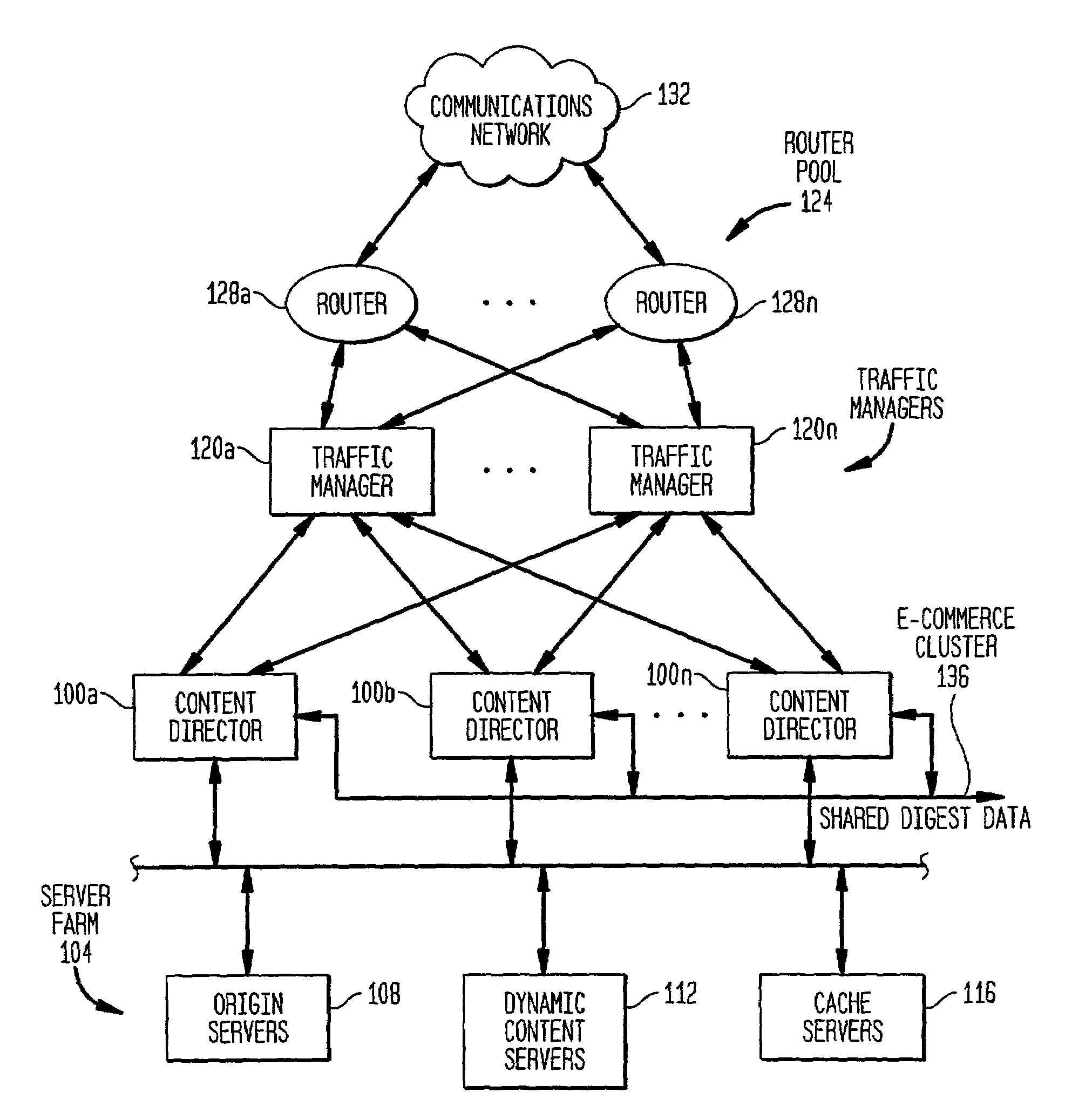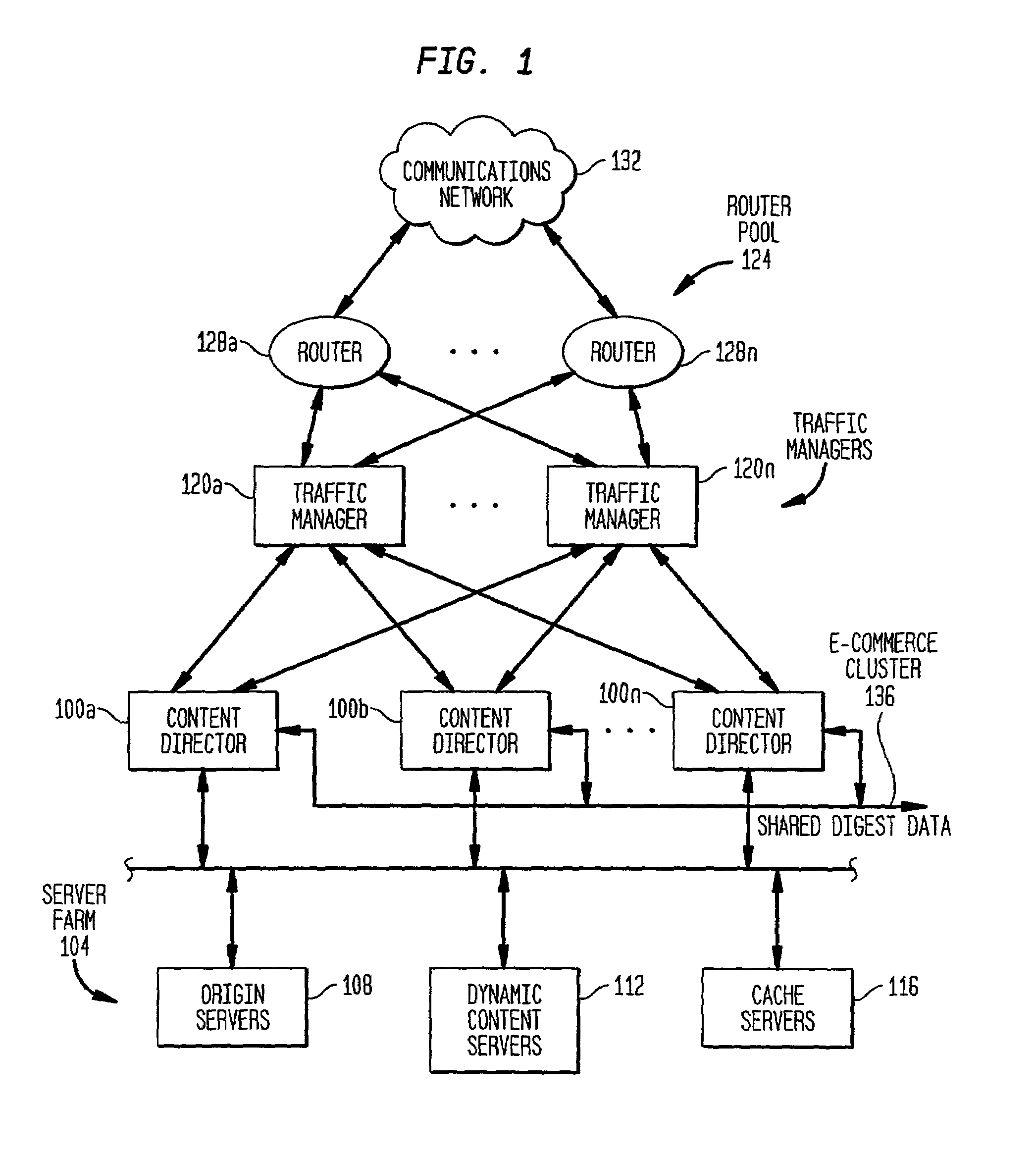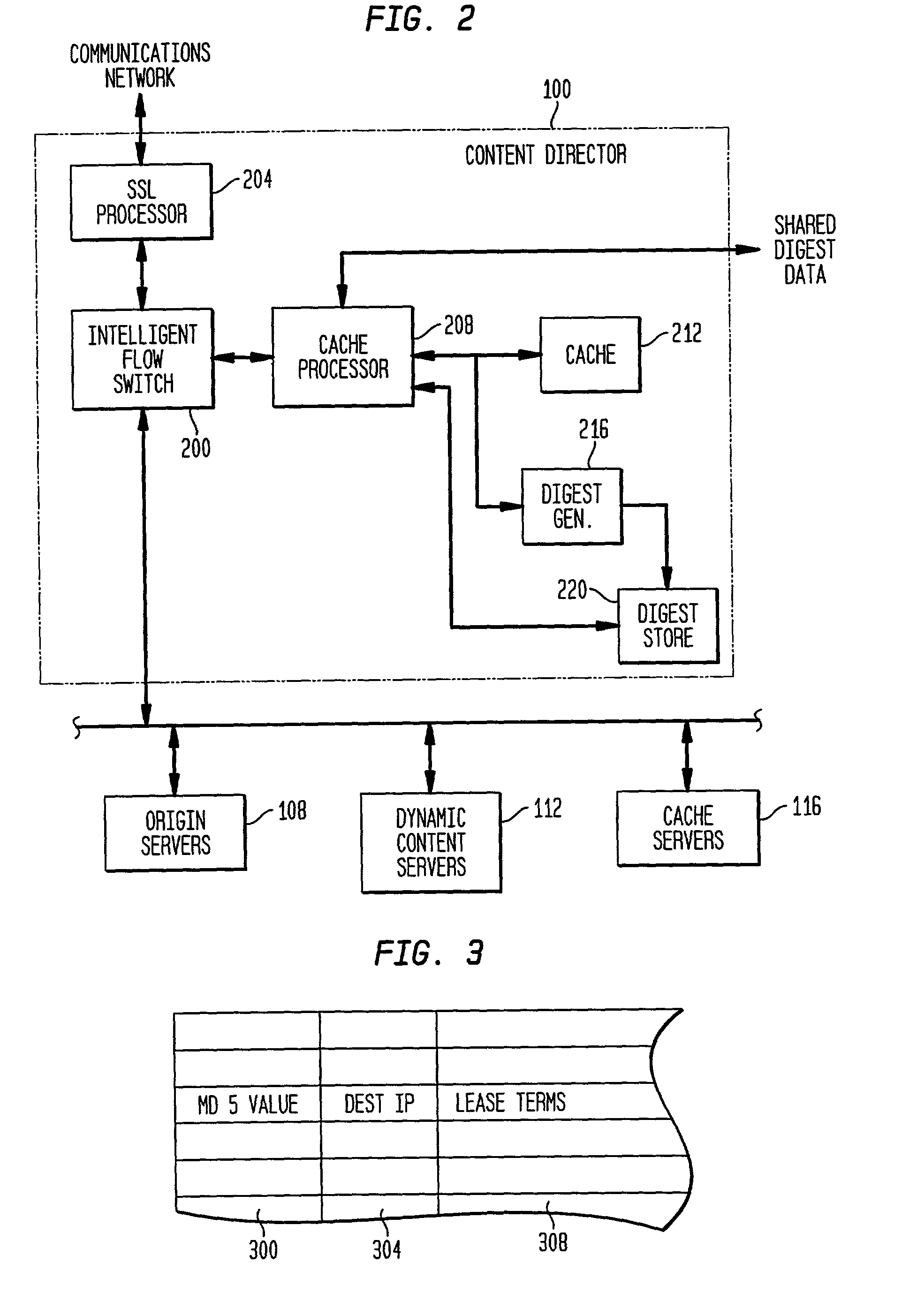High performance server farm with tagging and pipelining
- Summary
- Abstract
- Description
- Claims
- Application Information
AI Technical Summary
Benefits of technology
Problems solved by technology
Method used
Image
Examples
Embodiment Construction
The Components of the Network Switch
[0037]The present invention is preferably embodied as a server computer system identified as a content director server in FIG. 1. Multiple content director servers 100a–n are grouped together as a cluster to support, in a preferred embodiment, e-commerce-type HTTP transactions. A server farm 104 includes origin server(s) 108, dynamic content server(s) 112 and / or cache server(s) 116. Traffic managers 120a–n perform load balancing by known techniques across the cluster of content directors. A router pool 124 including routers 128a–n route packets from the communications network 132 to the traffic managers 120a–n.
[0038]Each content director server, as generally shown in FIG. 2, includes an intelligent flow switch 200 for efficiently routing HTTP transactions based on invariants in and associated with IP data packets. An decryption or SSL processor 204 is optionally provided to off-load encryption and decryption operations involved in both secure ses...
PUM
 Login to View More
Login to View More Abstract
Description
Claims
Application Information
 Login to View More
Login to View More - R&D
- Intellectual Property
- Life Sciences
- Materials
- Tech Scout
- Unparalleled Data Quality
- Higher Quality Content
- 60% Fewer Hallucinations
Browse by: Latest US Patents, China's latest patents, Technical Efficacy Thesaurus, Application Domain, Technology Topic, Popular Technical Reports.
© 2025 PatSnap. All rights reserved.Legal|Privacy policy|Modern Slavery Act Transparency Statement|Sitemap|About US| Contact US: help@patsnap.com



